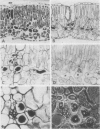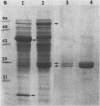Abstract
Immunohistochemical staining was used to determine the cellular distribution of two glycosylated polypeptides (molecular weights of 27 and 29 kilodaltons) which are normally present at low levels in soybean (Glycine max var `Wye') leaves but which markedly accumulate after depodding. These polypeptides, which comprise a substantial portion of the total leaf soluble protein of depodded plants, were exclusively located in the vacuoles of paraveinal mesophyll and associated bundle sheath cells. These results support the unique role of the soybean leaf paraveinal mesophyll in the transport and spatial compartmentation of nitrogen reserves in relation to seed filling.
Full text
PDF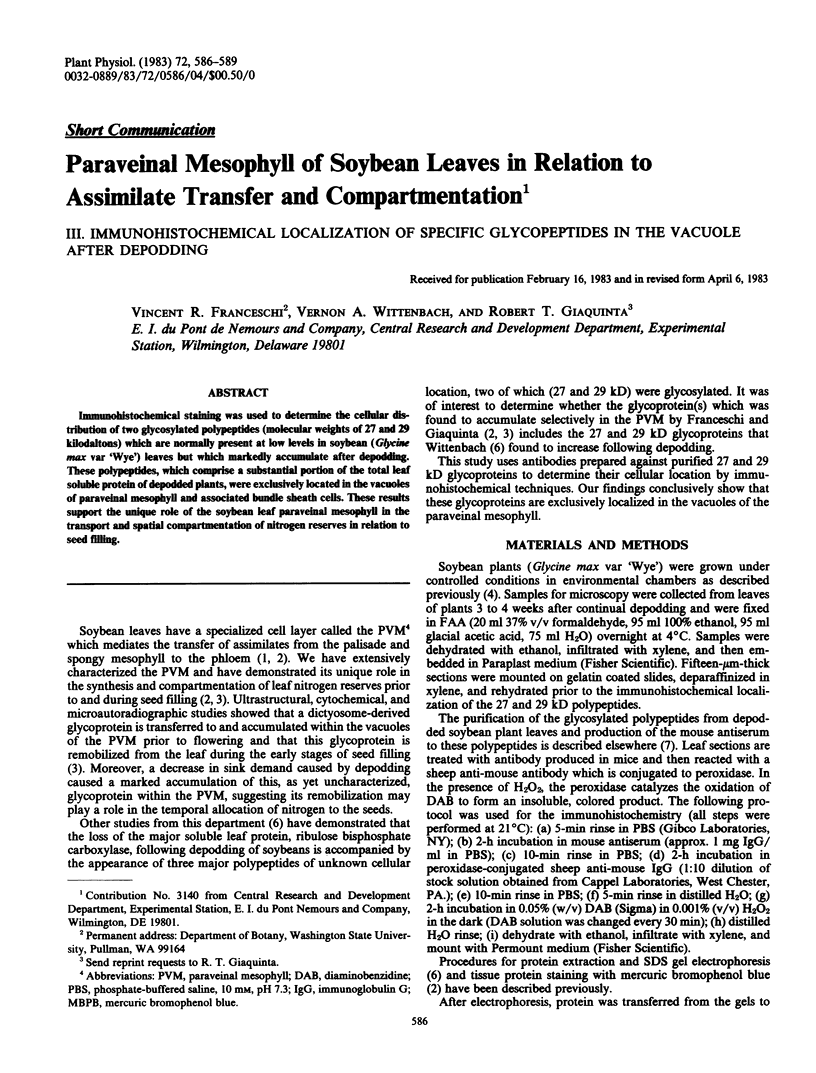
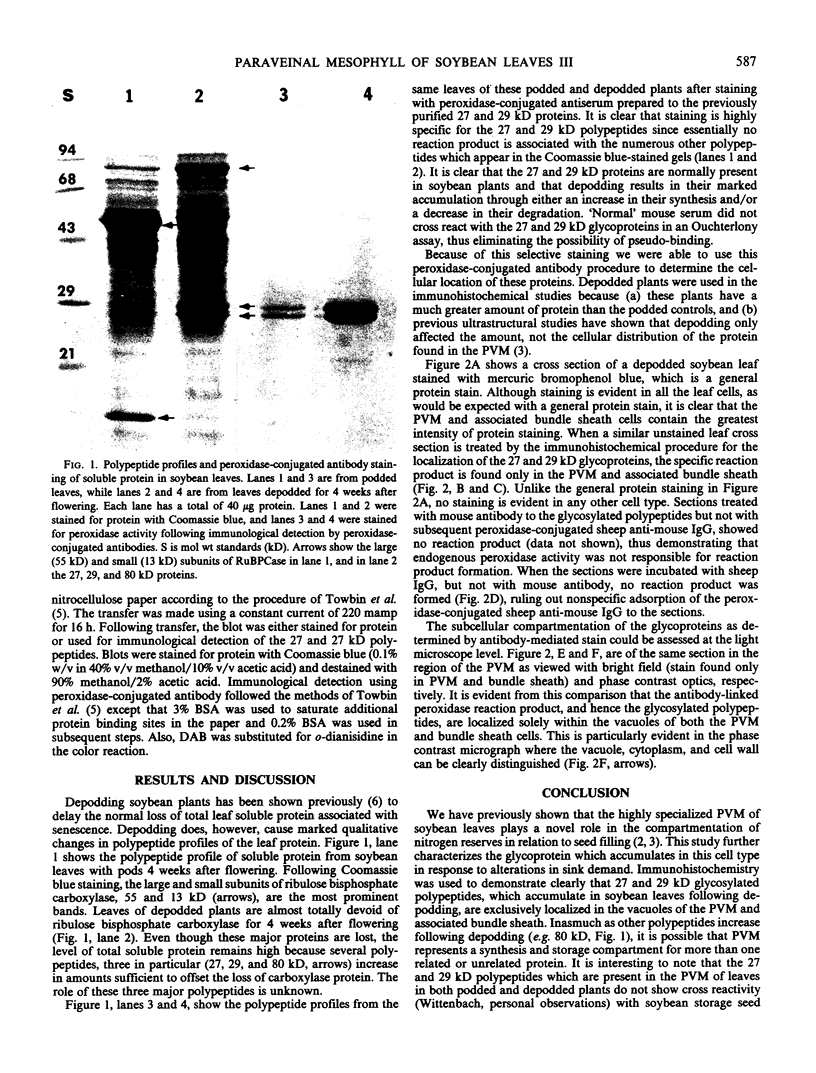
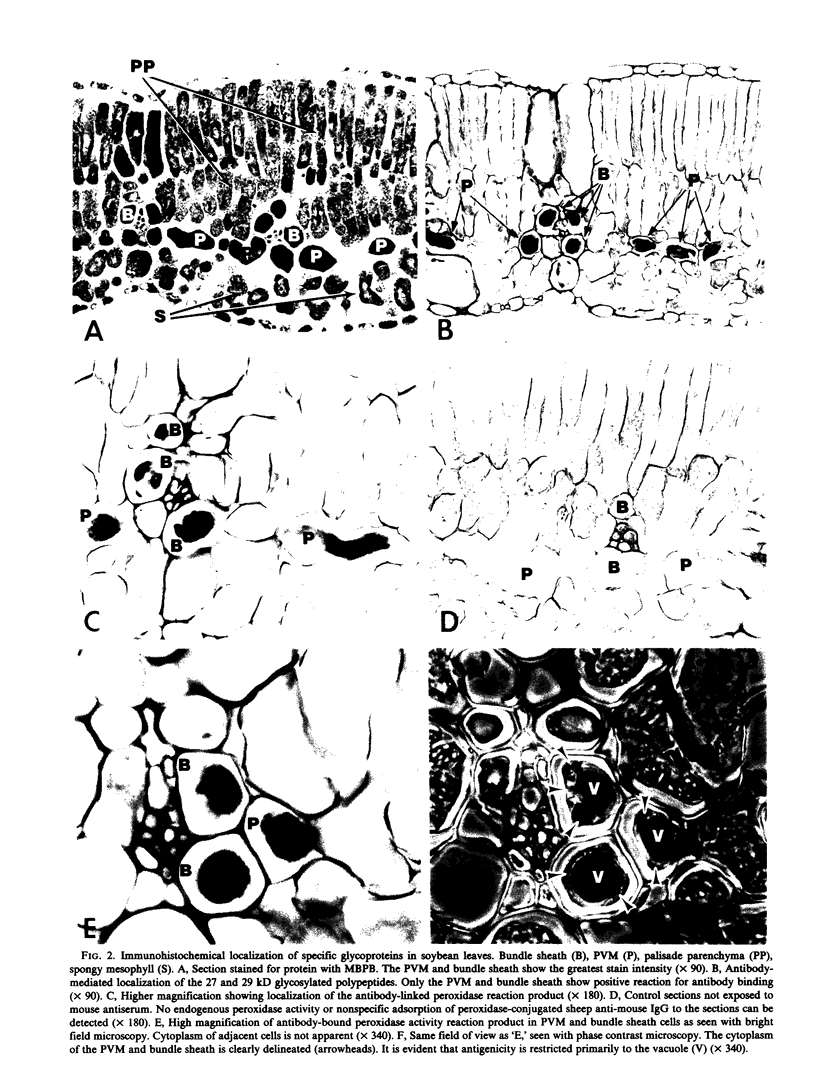

Images in this article
Selected References
These references are in PubMed. This may not be the complete list of references from this article.
- Quebedeaux B. Adenylate and nicotinamide nucleotides in developing soybean seeds during seed-fill. Plant Physiol. 1981 Jul;68(1):23–27. doi: 10.1104/pp.68.1.23. [DOI] [PMC free article] [PubMed] [Google Scholar]
- Towbin H., Staehelin T., Gordon J. Electrophoretic transfer of proteins from polyacrylamide gels to nitrocellulose sheets: procedure and some applications. Proc Natl Acad Sci U S A. 1979 Sep;76(9):4350–4354. doi: 10.1073/pnas.76.9.4350. [DOI] [PMC free article] [PubMed] [Google Scholar]
- Wittenbach V. A. Effect of pod removal on leaf senescence in soybeans. Plant Physiol. 1982 Nov;70(5):1544–1548. doi: 10.1104/pp.70.5.1544. [DOI] [PMC free article] [PubMed] [Google Scholar]



